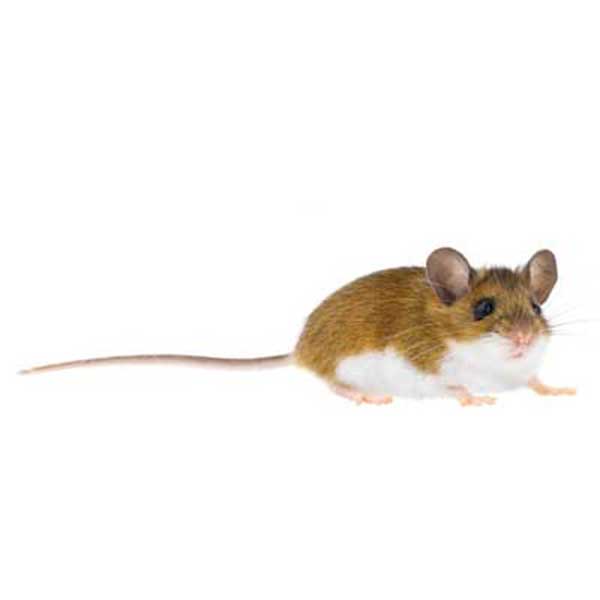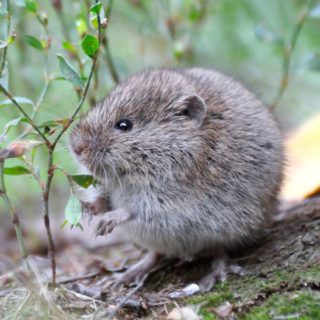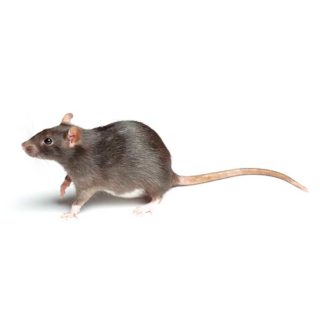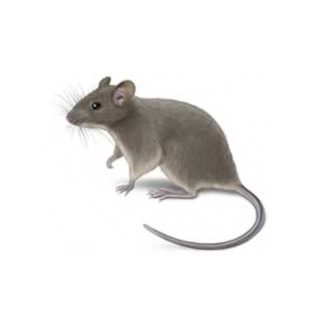Deer mice, often referred to as field mice or white-footed mice, are found throughout North America. Deer mice prefer woodlands, but they are also established in desert areas. Most often found outdoors in rural areas, deer mice rarely invade residential properties. These rodents are a common problem in agricultural areas, and will sometimes look for shelter in homes over winter. Their true danger lies in the fact that they are common carriers of hantavirus. They feed at dusk and dawn and tend to prefer insects, seeds, nuts, and berries.
Throughout most of the year, deer mice nest in outdoor areas that are quiet, dark, and undisturbed. When the weather gets colder during winter, deer mice tend to invade homes, garages, sheds, and sometimes even vehicles. When they get indoors, they are often found in basements or attics.
Identifying Deer Mice in Florida
Deer mice are small rodents distinguishable by their two-toned fur—brown or gray on top and white on the underside. They have large, dark eyes, prominent ears, and a tail that is also bi-colored. Deer mice are agile and, unlike house mice, they are more likely to be encountered outdoors, though they may enter homes seeking warmth and food. Their droppings are pointed at both ends, a key identifier if you suspect their presence.
Where in Florida Do Deer Mice Live?
Deer mice are nocturnal and spend their days in cup-shaped nests made of stems, leaves, and fibrous materials. Nests are lined with feathers or shredded cloth and can be found in tree hollows, fence posts, abandoned squirrel and bird nests, and the underside of logs and rocks. In homes, deer mice construct nests in low activity areas such as basements, attics, garages, and crawl spaces. Deer mice do not hibernate and may invade homes during winter months seeking shelter in storage boxes, wall voids, and upholstered furniture.
How Common Are Deer Mice in Florida?
Deer mice are less common in Florida than other rodent species like house mice and roof rats (also known as palm rats). They are primarily found in rural and wooded areas, where they prefer natural habitats over urban environments. Although they are not as prevalent in homes, deer mice may enter structures in search of food and shelter, particularly in more remote areas of the state. Their populations are more scattered, making them a less frequent, but still possible, pest concern in Florida.
Are Deer Mice Dangerous?
The biggest threat of deer mice is that they are able to transmit the dangerous—and potentially fatal—hantavirus. This disease is often transmitted through contact with mouse carcasses, or by breathing in air-borne urine droplets from infected deer mice.
If you have a deer mouse infestation in your Jacksonville FL property, always contact a licensed rodent control company.
Need help with Deer Mouse control?
Need Pest Control Service?
Leave your information below and we’ll be in touch with a FREE quote!
"*" indicates required fields
*During normal business hours. After hours calls will be returned the next business day.
Deer Mouse Control Specialists in Florida
Deer mice can be tricky to manage, especially in rural or wooded areas. If you’ve noticed signs of these pests around your property, it’s essential to take action quickly. Bug Out Florida specializes in safe and effective solutions to rid your home of deer mice and prevent future infestations. As experienced Florida rodent exterminators, we provide customized services to address the specific challenges of dealing with deer mice. Contact us today to schedule a consultation and protect your home from these elusive rodents.
FAQs
Are deer mice harmful?
Deer mice are known carriers of diseases like hantavirus, which can be transmitted to humans through their droppings, urine, and saliva. In Florida, their presence in homes can also lead to contamination of food supplies and damage to household items, making them a health risk that should not be ignored.
What’s the difference between deer mice and house mice?
Deer mice and house mice are different Florida rodent species. Deer mice have two-toned fur, with a white underside and a brown or gray back, and have larger eyes and ears. House mice are usually solid-colored, typically brown or gray, and have smaller eyes and ears. Deer mice are also more likely to be found in rural or wooded areas, while house mice are common in urban settings.
How do you get rid of deer mice?
To get rid of deer mice, it’s important to eliminate their food sources, seal potential entry points, and use traps. Regular cleaning and proper storage of food can also help prevent an infestation.Given the health risks, you might want to hire a professional pest control service to deal with an infestation
What attracts deer mice?
Deer mice are attracted to food sources like grains, seeds, and crumbs. They also seek shelter in warm, undisturbed areas, which makes homes, sheds, and garages particularly appealing.




